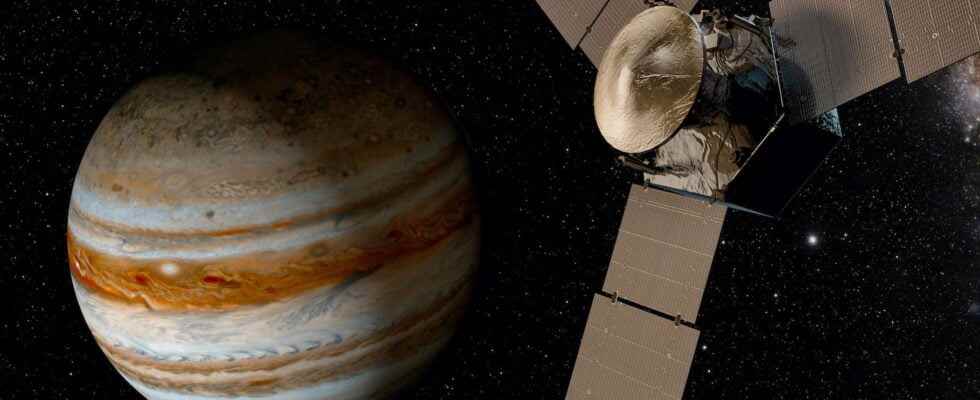Thanks to the images of Jupiter acquired by the Juno probe, a team of oceanographers has studied the forces that drive the polar cyclones of the giant planet.
Since His arrival in the system Jovian in July 2016, the probe Juno delights us with his pictures of the gas giant. Those photographs provided the raw material for a new study, published on January 10 in Nature Physics, which describes the turbulence at the poles of Jupiter and the strengths physical who lead the great cyclones.
Juno is here first space probe to capture images of Jupiter’s poles. Previous satellites were in orbit around the equatorial region of the planet, including views of the famous Great Red Spot. Juno is equipped with two camera systems, one for live images light visible and the other that captures heat signatures using the Jovian Infrared Auroral Mapper (JIRAM).
Eight cyclones occur at the North Pole of Jupiter and five at its south pole. Those storms, with a radius of about 1,000 kilometers, have been present since the first observations of Juno. Researchers don’t know where they came from or how long they’ve been around, but they now know that the convection moist is what keeps them. Researchers first hypothesized this transfer ofenergy after observing lightning during’thunderstorms on Jupiter.
From ocean whirlpools to Jupiter’s cyclones
The study’s lead author, Lia Siegelman, a post-doctoral physical oceanographer at the Scripps Institute of Oceanography (University of California, San Diego, USA), conducted the research after noticing that hurricanes at the poles of Jupiter seem to share similarities with the whirlwinds oceans that she studied during her doctorate. By using the pictures of Juno and principles used in geophysical fluid dynamics, Siegelman and his colleagues provided evidence for a long-standing hypothesis that moist convection – when theair hotter and less dense rises – drives these cyclones.
Siegelman and his colleagues analyzed a set of images infrared capturing the north polar region of Jupiter and in particular the cluster of polar vortices. The researchers were able to calculate the speed and the management of wind following the movement from clouds between pictures. The team then interpreted the infrared images for the thickness of the clouds. Warm regions correspond to thin clouds, where it is possible to see deeper into theatmosphere of Jupiter, while the cold regions represent a thick cloud cover, covering the atmosphere of Jupiter.
From Jovian cyclones to terrestrial climate
These results gave the researchers clues about the energy of the system. Since Jovian clouds form when warmer, less dense air rises, the researchers found that the rapidly rising air in the clouds acts as an energy source that fuels larger scales up to large circumpolar and polar cyclones.
According to Siegelman, understanding the jupiter energy system, on a scale much larger than that of the Earth, could also help us to understand the physical mechanisms at play on our Planet by highlighting certain energy routes that could also exist on Earth.
Juno will continue toorbit around Jupiter at least until 2025, providing researchers and the public with new images of the planet and its vast satellite system.
What you must remember
- Large cyclones occur at the poles of Jupiter.
- A new study, inspired by ocean eddies on Earth, shows that moist convection is what keeps these cyclones going.
- Understanding these phenomena on Jupiter could help us understand the physical mechanisms at play on our planet Earth.
Interested in what you just read?
.
fs3
